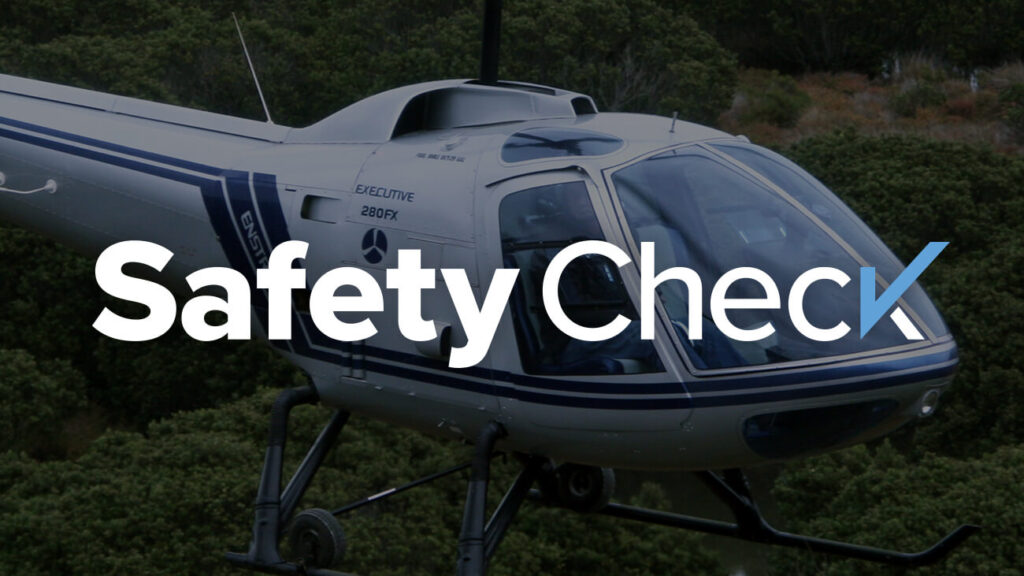Safety Check: Vuichard Recovery becoming more popular

In this month’s edition of “Safety Check,” let’s review the recovery procedures for vortex ring state (VRS), formerly known as Settling with Power. Unfortunately, vortex ring state leads to a number of crashes each year, as it occurs close to the ground where there is little altitude remaining for recovery.
Vortex ring state occurs when a helicopter descends at a rate that puts the rotor blades in its own downwash instead of drawing clean air from above the blades. As the helicopter slows down and begins to descend, the upflow of air from below is greater than the downflow from the rotor. This leads to the development of a series of vortex rings along the main rotor blades much like wingtip vortices generated from a jet aircraft. If left uncorrected, descent rates can exceed 6,000 feet per minute with devastating results.
For vortex ring state to occur, three conditions must be present: the helicopter must be developing engine power, have an airspeed of less than effective translational lift (defined as 16-24 knots) and have a descent rate that exceeds 300 feet per minute. Personally, I have developed my own 30/30 rule (I dropped the zero from 300). If my indicated airspeed is less than 30 knots, then my descent rate needs to be less than 300 feet per minute. Or, if my descent rate is greater than 300 feet per minute, then my indicated airspeed needs to be greater than 30 knots. A tailwind or confined area can worsen conditions.
For years we have been trained pilots to recover from vortex ring state by simply lowering the collective with forward cyclic and flying out of the dirty air. The FAA practical test standards for vortex ring state recovery don’t specify a maximum altitude loss, but 100 – 200 feet is common. I recall one scary moment when I had an applicant wait a little too long to recover from a VRS demonstration and we were sinking about 2,000 feet per minute! We probably lost a total of 500 feet before we finally leveled off.
Up until recently, all my applicants recovered from VRS by using the standard method. However, four out of my last applicants demonstrated the Vuichard method to me, and each one was remarkably successful. The Vuichard method is named after Claude Vuichard from Switzerland. Claude was an inspector for the Federal Office of Civil Aviation in Switzerland. His technique is quite simple and is ideal when altitude or obstructions don’t permit traversing forward.
Two of my five applicants were flying Enstrom models. For helicopters like Enstroms’ rotorcraft, which include a counterclockwise rotating main rotor, the method requires the pilot to pull the collective to climb power and apply the right cyclic and left pedal simultaneously. This method forces the helicopter into a “slip” that enables the tail rotor to “push” the helicopter into clean air. And, because climb power has already been established, the loss of altitude is minimal. As demonstrated by my recent applicants, we only lost about 20 to 50 feet by using this recovery procedure, which is super impressive.
Why is this so important? When you are down low on the approach, would you rather lose 100 – 200 feet or as little as 20 to 50 feet? If you haven’t tried the Vuichard method for VRS recovery, I would encourage you to have an experienced flight instructor introduce you to this recovery procedure. I see the FAA Flying handbook finally added a paragraph dedicated to the Vuichard method. So apparently, they have become believers too.
Fly Safe.

Randy is a dual rated Airline Transport Pilot with 13,000 flight hours in airplanes and helicopters. He has type ratings in the BE400 and CE500. Randy has been a rotorcraft Designated Pilot Examiner representing the Grand Rapids FSDO since 2014. Currently he works for Sweet Helicopters, a northern Indiana Part 135 air carrier operator and serves as the Airport Manager of the Goshen Municipal Airport.
About Enstrom Helicopter
From Rudy Enstrom’s early designs in 1943 to initial testing in a Michigan Quarry in 1957 to aircraft operating on six continents, Enstrom Helicopter Corporation has maintained a reputation for safety, value and performance. Based in Menominee, Michigan and proudly made in the United States, Enstrom has a rich history for design innovation. The goal is to provide helicopters to the customer’s exact specification and deliver support and maintenance worldwide.